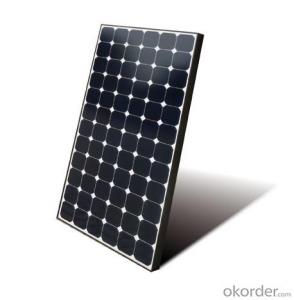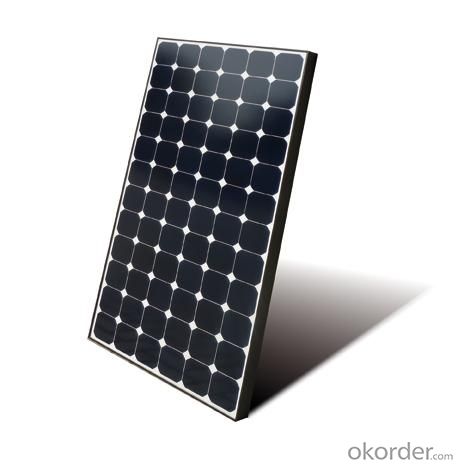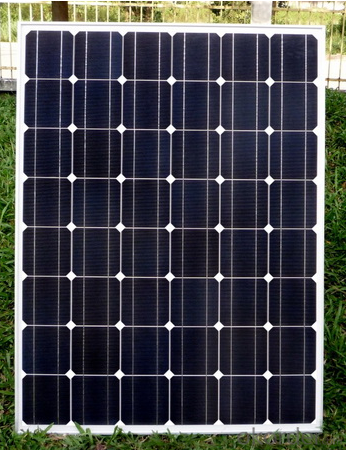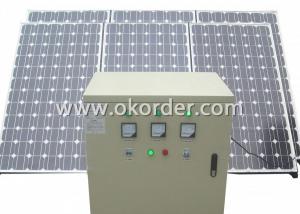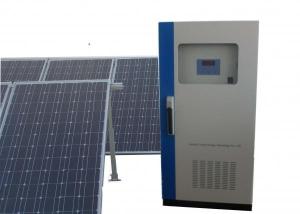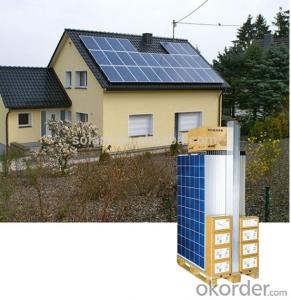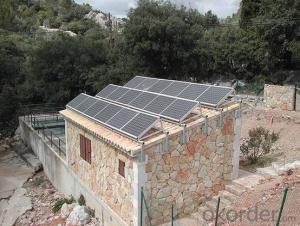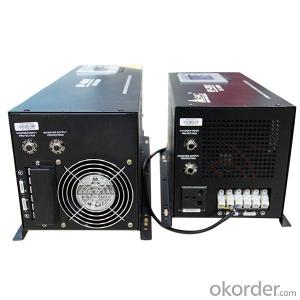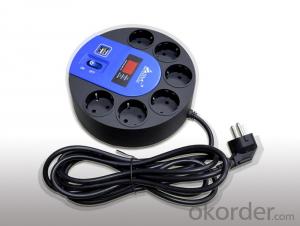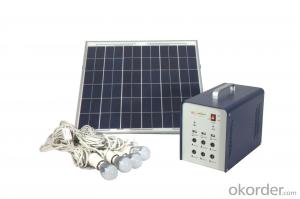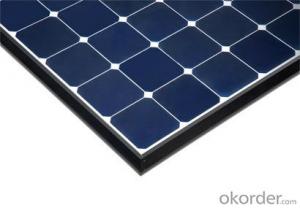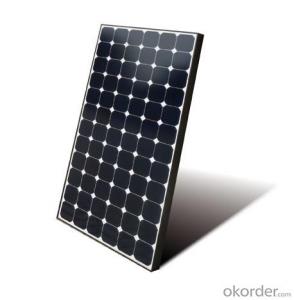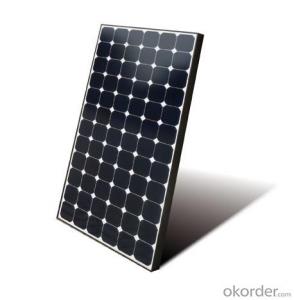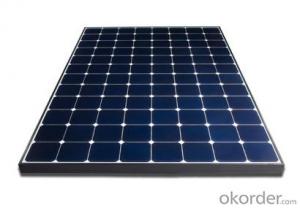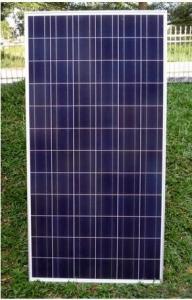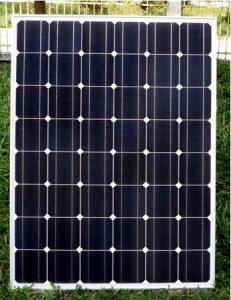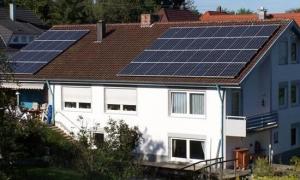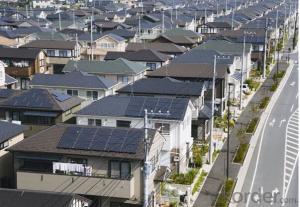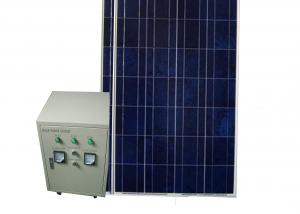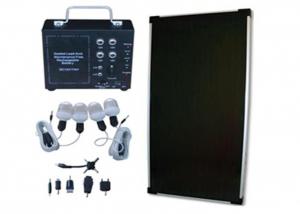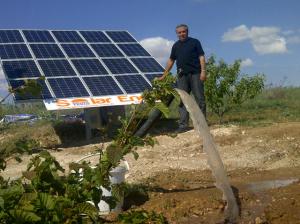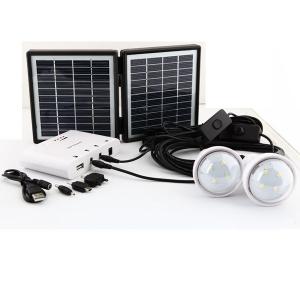Solar Energy Systems Dealers - CNBM On Grid System 15KW with Certificate UL TUV CE
- Loading Port:
- Shanghai
- Payment Terms:
- TT OR LC
- Min Order Qty:
- 100 watt
- Supply Capability:
- 1000 watt/month
OKorder Service Pledge
OKorder Financial Service
You Might Also Like
Specification
CNBM On Grid System 10KW with Certificate UL TUV CE
Product description
They range from small residential and commercial rooftop systems to large utility-scale solar power stations. Unlike stand-alone power systems, a grid-connected system rarely includes an integrated battery solution, as they are still very expensive. When conditions are right, the grid-connected PV system supplies the excess power, beyond consumption by the connected load, to the utility grid.
Connection of the photovoltaic power system can be done only through an interconnection agreement between the consumer and the utility company. The agreement details the various safety standards to be followed during the connection.[4]
Bypass diodes may be incorporated or used externally, in case of partial module shading, to maximize the output of module sections still illuminated.
Grid-connected PV systems are comparatively easier to install as they do not require a battery system.[1][6]
Grid interconnection of photovoltaic (PV) power generation systems has the advantage of effective utilization of generated power because there are no storage losses involved.[7]
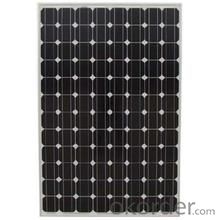
Application
Industrial
Commercial
Residential
Feature
Residential, grid-connected rooftop systems which have a capacity more than 10 kilowatts can meet the load of most consumers.[2] They can feed excess power to the grid where it is consumed by other users. The feedback is done through a meter to monitor power transferred. Photovoltaic wattage may be less than average consumption, in which case the consumer will continue to purchase grid energy, but a lesser amount than previously. If photovoltaic wattage substantially exceeds average consumption, the energy produced by the panels will be much in excess of the demand. In this case, the excess power can yield revenue by selling it to the grid. Depending on their agreement with their local grid energy company, the consumer only needs to pay the cost of electricity consumed less the value of electricity generated. This will be a negative number if more electricity is generated than consumed.[3] Additionally, in some cases, cash incentives are paid from the grid operator to the consumer.
Packaging
With carton and box
- Q: Can solar energy systems be used in areas with limited access to solar energy net metering programs?
- Yes, solar energy systems can still be used in areas with limited access to solar energy net metering programs. While net metering programs provide incentives and credits for excess energy produced by solar panels, solar energy systems can still generate electricity and provide significant savings even without net metering. By utilizing battery storage systems, excess energy can be stored and used during periods of low solar production, ensuring a reliable and uninterrupted power supply. Additionally, solar energy systems can contribute to reducing reliance on traditional energy sources and help mitigate environmental impacts, making them a viable option in areas without net metering programs.
- Q: How much space do solar panels take up on a roof?
- The amount of space solar panels take up on a roof depends on various factors, such as the size and number of panels, as well as the layout and orientation of the roof. On average, a typical residential solar panel system requires about 100-400 square feet of roof space. However, it's best to consult with a solar professional to assess your specific roof and determine the optimal size and configuration for your solar panel installation.
- Q: What is the role of power purchase agreements in solar energy deployment?
- Power purchase agreements (PPAs) play a crucial role in accelerating the deployment of solar energy. PPAs are contracts between solar developers and electricity buyers, typically utilities or corporations, in which the developer agrees to sell electricity generated from solar installations to the buyer at a predetermined price over a specified period of time. One of the primary benefits of PPAs in solar energy deployment is their ability to mitigate financial risks for both the developer and the buyer. Solar projects often require significant upfront investments, and PPAs help developers secure long-term revenue streams, making it easier to secure financing for the project. On the other hand, buyers benefit from the stable and predictable electricity prices offered by PPAs, reducing their exposure to volatile fossil fuel prices. Furthermore, PPAs provide a mechanism for scaling up solar installations. By entering into long-term contracts, developers can secure a steady income, enabling them to build more solar projects and expand their capacity. This not only increases the overall deployment of solar energy but also helps drive down the costs associated with solar installations due to economies of scale. PPAs also offer flexibility and accessibility. They can be structured in various ways, catering to the unique needs of different parties involved. For instance, a utility may opt for a utility-scale PPA, allowing them to procure a large amount of solar energy to meet their renewable energy targets. On the other hand, a corporation may choose to enter into a distributed PPA, installing solar panels on their own premises and benefiting from reduced electricity costs and a positive sustainability image. Additionally, PPAs contribute to the overall stability and grid integration of solar energy. By signing long-term agreements, solar developers provide a reliable and predictable source of electricity to the grid, assisting utilities in their planning and management of the grid. This helps to balance the intermittency of solar energy and ensures a smooth integration of renewable sources into the existing energy infrastructure. In conclusion, power purchase agreements are vital tools in driving the deployment of solar energy. By reducing financial risks, promoting scalability, offering flexibility, and contributing to grid stability, PPAs incentivize the development and adoption of solar installations, ultimately accelerating the transition towards a cleaner and more sustainable energy future.
- Q: What is the role of voltage optimizers in a solar energy system?
- The main function of voltage optimizers in a solar energy system is to optimize and regulate the voltage levels of the electricity generated by the solar panels. Solar panels produce direct current (DC) electricity, which must be converted to alternating current (AC) for most household appliances and to be fed into the electrical grid. However, the voltage generated by solar panels can vary due to factors like sunlight intensity, temperature, and shading. These voltage fluctuations can result in inefficient energy production and potential damage to connected electrical equipment. To address these issues, voltage optimizers stabilize and regulate the voltage levels within the solar energy system. They ensure that the voltage generated by the solar panels remains consistent and within the optimal range for efficient energy production. Moreover, by maintaining a stable voltage, voltage optimizers safeguard the electrical equipment from potential damage caused by voltage fluctuations. Additionally, voltage optimizers can enhance the overall performance and efficiency of the solar energy system. Through voltage optimization, they minimize energy losses and maximize the electricity output of the solar panels. This results in improved system efficiency and a higher return on investment for the solar energy system. In conclusion, voltage optimizers are essential components of a solar energy system. They stabilize and regulate voltage levels, ensuring efficient energy production, protecting electrical equipment, and optimizing the overall performance and efficiency of the system.
- Q: Can solar energy systems be used in areas with limited access to education?
- Yes, solar energy systems can be used in areas with limited access to education. Solar energy systems are relatively simple and can be easily installed and maintained with basic training. Moreover, solar power does not require complex infrastructure or specialized skills to operate, making it accessible to communities with limited education. Additionally, the adoption of solar energy systems can contribute to the development of educational opportunities by providing electricity for schools and enabling access to online learning resources, thereby bridging the education gap in these areas.
- Q: What is net metering and how does it work?
- Net metering is a billing arrangement that allows individuals or businesses with solar panels or other renewable energy systems to receive credit for any excess electricity they generate and feed back into the grid. The process of net metering works by installing a bi-directional meter that can measure both the electricity consumed from the grid and the excess electricity generated by the renewable energy system. When the renewable energy system produces more electricity than is being used, the excess is sent back to the grid, and the meter runs in reverse, effectively crediting the system owner for the surplus energy. This credit can then be used to offset the electricity consumed from the grid during times when the renewable energy system is not generating enough power, such as at night or during cloudy days. The system owner only pays for the net amount of electricity used from the grid, which is the difference between the electricity consumed and the electricity generated. Net metering provides several benefits. First, it allows individuals and businesses to reduce their electricity bills by offsetting their consumption with the excess energy they generate. Second, it promotes the use of renewable energy sources, as it provides a financial incentive for individuals to invest in solar panels or other renewable energy systems. Moreover, net metering helps to reduce the strain on the electrical grid by distributing the generation of electricity across multiple sources. Net metering policies and regulations vary by country and state, so it is important for individuals and businesses to familiarize themselves with the specific rules and guidelines in their area. Overall, net metering is a win-win solution that benefits both renewable energy system owners and the environment.
- Q: Can solar energy systems be used in powering theme parks or water parks?
- Yes, solar energy systems can certainly be used to power theme parks or water parks. These types of parks consume a significant amount of energy due to lighting, water pumps, rides, and various other facilities. Solar panels can be installed on rooftops, parking lots, or dedicated areas to harness sunlight and convert it into electricity. This renewable energy source can help reduce operating costs, decrease carbon emissions, and promote sustainability in the entertainment industry.
- Q: What is the lifespan of a solar energy system?
- The lifespan of a solar energy system typically ranges from 25 to 30 years.
- Q: Can solar energy systems be used for powering electric vehicle solar charging parking lots?
- Yes, solar energy systems can definitely be used for powering electric vehicle solar charging parking lots. In fact, this combination of solar energy and electric vehicle charging is gaining popularity as a sustainable solution for transportation and energy needs. Solar panels can be installed on the parking lot structure or nearby rooftops to capture sunlight and convert it into electricity. This clean energy can then be used to power the electric vehicle charging stations located in the parking lot. By utilizing solar power, these charging stations can operate without relying on the grid, reducing the use of fossil fuels and minimizing greenhouse gas emissions. Additionally, solar-powered charging lots offer the advantage of being able to generate electricity during the day when the demand for charging is typically higher. This integration of solar energy systems and electric vehicle charging infrastructure is an innovative and environmentally friendly approach to powering transportation.
- Q: How do solar energy systems reduce carbon emissions?
- Solar energy systems reduce carbon emissions by harnessing energy from the sun and converting it into electricity without burning fossil fuels. This renewable source of energy replaces the need for electricity generated from coal, oil, and natural gas, which emit carbon dioxide and other greenhouse gases into the atmosphere. By using solar energy, we can significantly reduce our dependence on carbon-intensive power sources, thereby mitigating the harmful effects of climate change and helping to create a cleaner, more sustainable future.
Send your message to us
Solar Energy Systems Dealers - CNBM On Grid System 15KW with Certificate UL TUV CE
- Loading Port:
- Shanghai
- Payment Terms:
- TT OR LC
- Min Order Qty:
- 100 watt
- Supply Capability:
- 1000 watt/month
OKorder Service Pledge
OKorder Financial Service
Similar products
Hot products
Hot Searches
Related keywords
